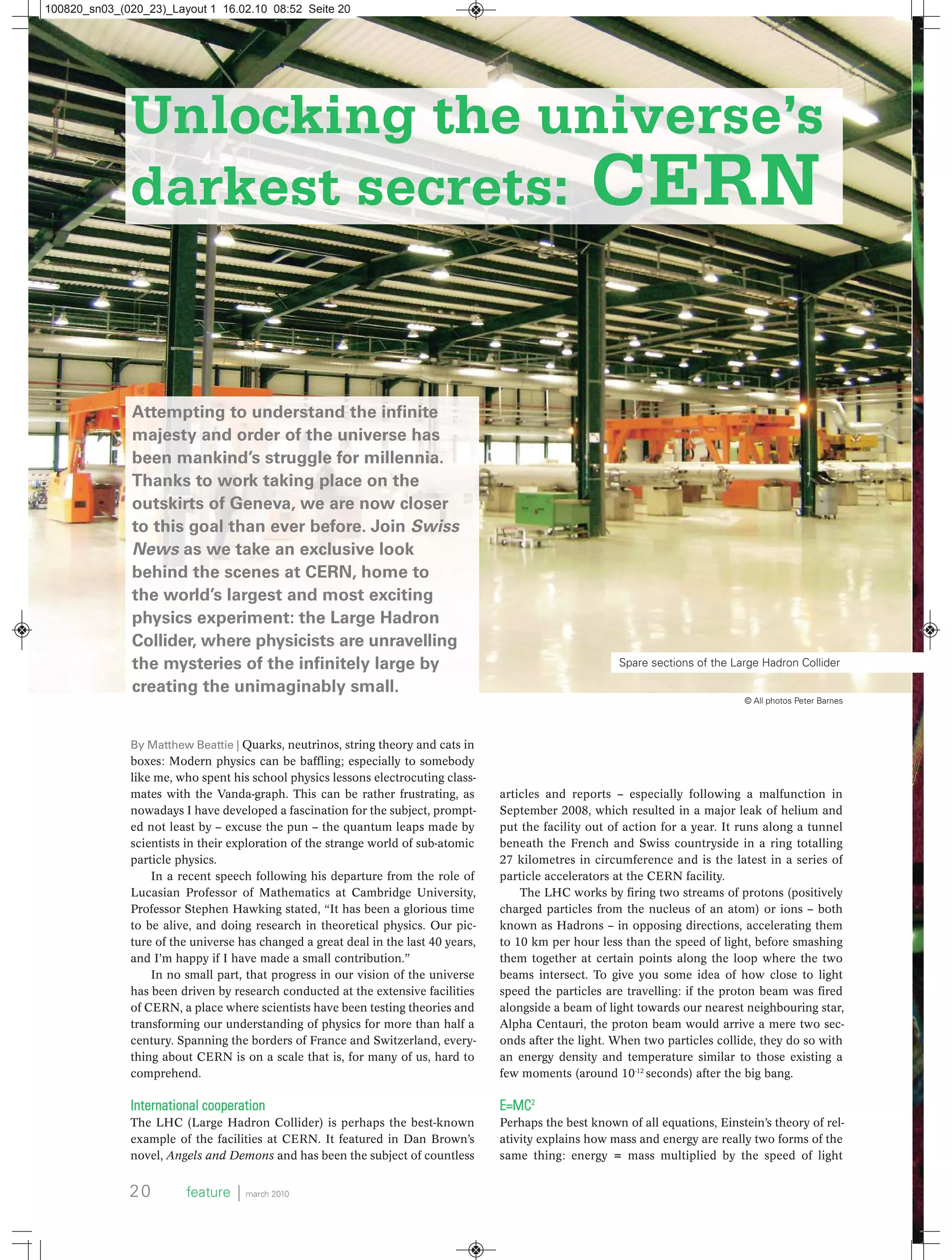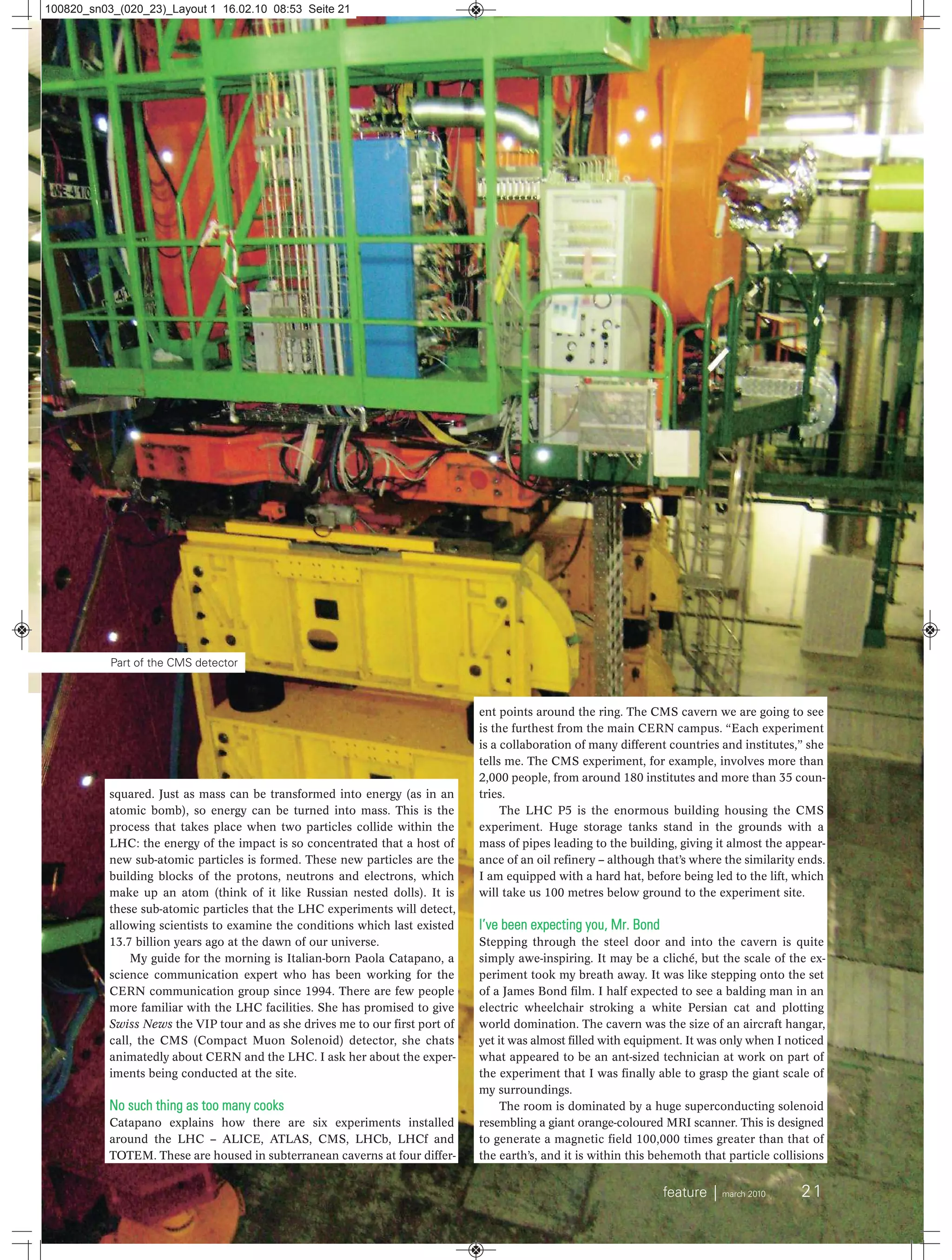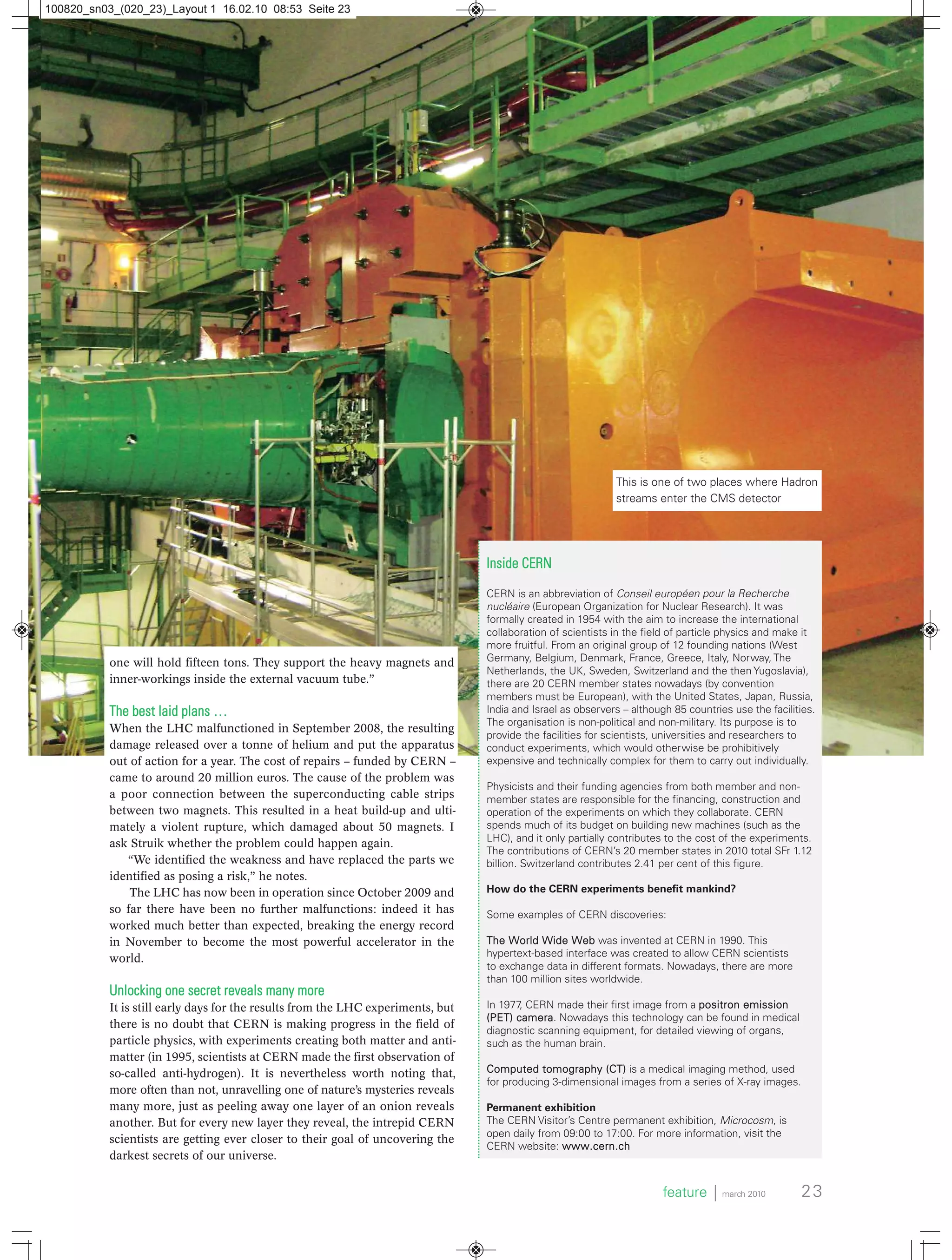1) The document discusses CERN, the particle physics laboratory located near Geneva, Switzerland. It describes some of the research being done there, including experiments using the Large Hadron Collider to better understand the universe.
2) The Large Hadron Collider fires beams of protons towards each other at close to the speed of light to simulate the high energy conditions that existed shortly after the Big Bang. Experiments detect the subatomic particles created in these collisions to learn about fundamental forces and particles.
3) One goal is to find the Higgs boson particle, which could help explain how other particles acquire mass. Researchers also hope to gain insights into dark matter, black holes, and theories of everything. The scale of the


![will occur. Mounted around it are countless boxes, cables and
computers – each a part of numerous experiments belonging to
universities and institutions from around the world.
In search of the “God particle”
One of the many objectives of the LHC experiments is to prove
the existence of the so-called “Higgs boson”, an as yet unproven
particle that interacts with other particles to give them mass. Of
the 100 million individual detecting elements making up the
CMS detector, many are dedicated to identifying and recording
any occurrence of the Higgs. Should scientists prove the existence
of this elusive particle, they will move much closer to a unified
theory for all physical phenomena.
Besides the Higgs boson, Catapano tells me that the scien-
tists conducting experiments with the CMS detector hope to
study the physics of black holes and find new particles, such as
the theoretical graviton (postulated to be the carrier of gravity)
or the neutralino (the best candidate for explaining the composi-
tion of dark matter).
Black holes
The doom-scenario of CERN opening a black hole, which will
swallow us and everything around us, is a firm favourite among
tabloid journalists. I ask Catapano whether there is any truth in
this notion.
“There is a very small chance that we might create a micro
black hole,” she tells me. “However, it’s important to remember
that we are working on a very small scale, with tiny amounts of
energy. If a black hole should appear, it would be so tiny and
weak it wouldn’t be able to sustain itself and would disappear
immediately.”
A point also made by Professor Stephen Hawking in his
2008 speech, prior to the LHC being switched on for the first
time. “If the collisions in the LHC produced a micro black hole –
and this is unlikely – it would just evaporate away again, pro-
ducing a characteristic pattern of particles. Collisions at these
and greater energies occur millions of times a day in the Earth’s
atmosphere, and nothing terrible happens.”
Engineering the impossible
After our tour and a thorough insight into the science behind the
LHC, Catapano left me in the capable hands of her partner and
CERN colleague, Mike Struik. As one of the engineers involved
in constructing LHC, Dutch-born Struik is a wealth of informa-
tion about the particle accelerator. His passion for engineering,
knowledge and lively personality make him the perfect teacher
for explaining such a complex piece of equipment.
When a stream of hadrons is fired into a particle accelerator,
it follows a perfectly straight path. In order to “steer” the stream
around a loop, such as the LHC, an array of 9,300 powerful, and
mostly superconducting, magnets is required. These magnets re-
quire much of the energy used by the LHC (when in operation,
the LHC uses the equivalent electricity to that used by the whole
of Canton Geneva during the same time period). Struik tells me
how such a construction presented some unique challenges. Not
only do the tubes down which the particles travel have to be an
ultra-high vacuum, but the magnets need to be cooled with
liquid helium in order to be super-conducting. Without super-
conductor technology (to conduct electricity without resistance),
each cable would need to be as thick as a man’s thigh and the
LHC would require several times more power than it uses.
Rocket science
“If you go to industry and you say to them that you need instru-
mentation wiring, they will say ‘Sure! Anything you like.’ Then
you say the cable needs to be able to function in liquid helium at
1.9 kelvin [-271.3°C] and they tell you, ‘we can give you cables.
Test them and if they work, let us know so we can include it in
our brochures!’”
Every component had to be sourced and in most cases,
everything had to be made especially. Struik shows me some fibre-
glass composite mounts, roughly the size of a toaster. “These
came from a company in Spain: the same one that makes the
Ariane rocket shells [for the European Space Agency] … Each
22 feature ⏐ march 2010
100820_sn03_(020_23)_Layout 1 16.02.10 08:53 Seite 22](https://image.slidesharecdn.com/98eea6f2-6339-4b1f-bd70-83f4088b29b2-151103192835-lva1-app6891/75/Exploring-CERN-compressed-3-2048.jpg)
